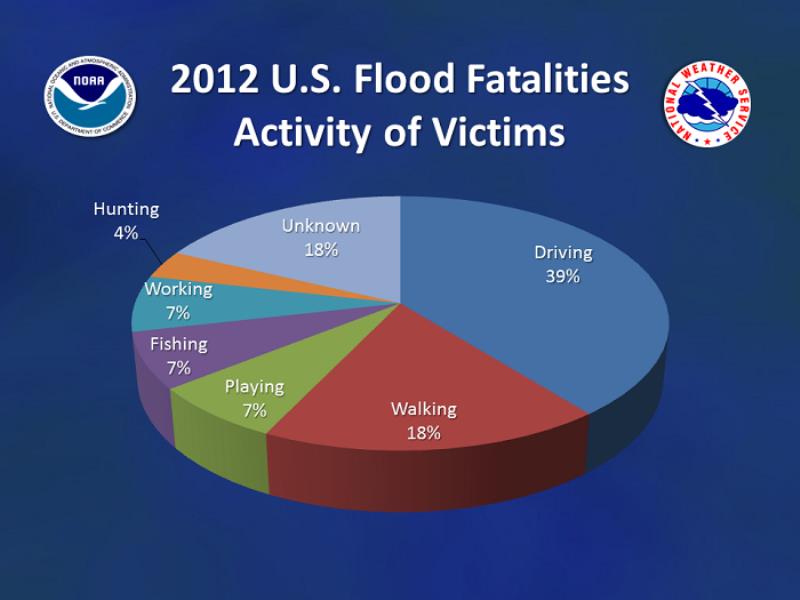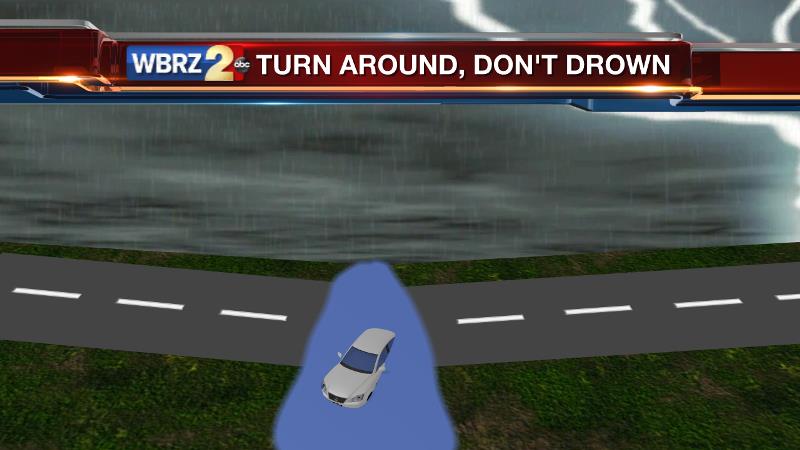SEVERE WEATHER AWARENESS: the most deadly hazard
Over the last 30 years, on average, flash flooding kills more people each year than any other weather phenomenon. Stats from around the U.S. show about 85 fatalities per year due to flooding. Tornadoes are in second place, with a 30-year average of 75 deaths annually.

Flash flooding is a result of sudden, heavy rainfall commonly produced from slow-moving intense thunderstorms or multiple rounds of thunderstorms occurring over the same area. Flash flooding can also occur with a dam or levee failure. Flash floods become raging torrents of water which rip through creek beds, city streets, and areas of poor drainage, sweeping away everything before them.
A FLASH FLOOD WATCH means conditions are favorable in the atmosphere to where heavy rain is possible over a specified area. Stay alert to the weather and think about where you would go if water begins to rise if you are put under a warning.
A FLASH FLOOD WARNING means flash flooding is occurring or imminent and you should immediately move to a safer location and look out for water covered roads.
Trending News
A FLASH FLOOD EMERGENCY means extremely heavy rainfall has already occurred, will continue to occur, and emergency officials are reporting life threatening rises in water that are resulting in water rescues or evacuations. Move to higher ground and do not cross water covered roads.
Determine your risk of flash flooding by knowing your proximity to streams.
Densely populated areas are at a greater risk for flash flooding because pavement and concrete increases runoff. Less water being absorbed by the ground means there is more water available to overwhelm storm drains and flood low-lying areas.
For outdoor enthusiasts, it is important to be aware of rain potential before you head out—especially if fishing or camping near a body of water. A creek that is only six-inches deep can rise up to 10 feet if an area is inundated with intense rainfall. Quick water level rises, a muddy discoloration or loud noise may be a sign of trouble upstream meaning you should move to safer ground.
Almost half of all flash flooding deaths occur in vehicles. In 2013, more than half of the deaths attributed to flash flooding were related to driving. Many do not realize that two feet of water can cause most cars to float. In many cases, where water is moving quickly on roadways, it is near a river or creek making vehicles more prone to be swept away. Even for roads you travel frequently, if you can’t see the ground, you can’t be sure what lies beneath—the road could have washed away.
The National Weather Service says it best when it comes to driving in a potential flood situation, “Turn around, don’t drown!”

Stay ahead of severe weather; stay in touch with our weather team on social media:
Facebook: WBRZ Weather
Twitter: @WBRZweather


